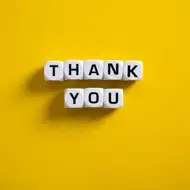How Lisa Transitioned at Work, Making It Safer for Others to do the Same

From as early as preschool, Lisa Richardson always felt more comfortable being grouped with girls and women, even though she was designated male at birth. But Richardson grew up in the 60s and 70s, an era where talking about this mismatch of who she was on the inside and who she looked like on the outside could put her in danger.
Back then, the term transgender was new. Former tennis star Renée Richards upped awareness of the term when she became one of the first public figures to talk about her gender transition, and it didn’t come without backlash. Richards faced scrutiny and ridicule as she unapologetically fought to join the professional women's tour, paving the way for other transgender athletes.
As a teenager, Richardson would hop on the city bus from the suburbs of Cleveland, Ohio and visit the Cleveland Public Library. There, between the covers of sociology and medicine books, the media sensationalism about transgender people was swept away and the reality of their lives was acknowledged.
“It was then that I started realizing that portrayals in the media of transgender people was way off from reality,” she says.
It was also then that Richardson realized a gender transition was possible. Her plan was to go to college, begin a career in engineering, save money for five or ten years to finance the transition, and start her life over. The emotional cost was something she’d have to work out later.
“I knew it was likely that I couldn’t keep my career, and that I would lose most of my family and friends,” she says.
When her closest female friend asked her out her senior year of college, Richardson kept her desire to transition a secret. It was 1984, and she knew that this wasn’t something that was casually discussed.
“You didn’t come out to anyone you didn’t want to lose,” she says.
Richardson also figured their relationship wouldn’t last. She was graduating from college in Indiana six months earlier than her partner and was planning to take an aerospace job in Baltimore. She expected the strains of a long-distance relationship, even if only for six months, would wear on them. Richardson was wrong.
Richardson’s partner decided to surprise her during Easter break, and when she walked into Richardson's apartment, she found Richardson’s choice in sleepwear was not what she’d expected. The words out of her mouth were, “Oh my God.” The words out of Richardson’s mouth were, “Please don’t go. Let’s talk.”
“We had a real long tearful conversation. When we got done with it, we basically came to the conclusion that there’s no guarantees in anybody’s life. Do we really love each other? Yes. Why do we love each other? Is it because of anatomy? No. It’s because of who we are,” she says. “That was really the fundamentals of our relationship. No matter what happens to our bodies the fundamentals didn’t change.”
Both Richardson and her partner wanted to be parents. They married, had two kids, and over the course of twelve years, Richardson transitioned from male to female, going slow so that the family had time to adjust to the changes. She began with counseling and hormone therapy and facial hair removal in the 90s and finished with sex reassignment surgery in 2002. The choice to take 12 years to transition was a compromise that felt right but didn’t come without stress.
“It’s kind of like being an actor in a play where you could never step off the stage,” she says. “You might be doing a great job but you’re never being yourself.”
Overall, the experience of her gender transition was much more positive than she’d anticipated. She kept most of her friends and family, was able to continue with her career, and didn’t have to start over. Yet, even now, how others perceive her can be a challenge.
“I’m comfortable being a woman,” she says. “I’m less comfortable being considered a transgender woman; the transgender part comes to mind first, and woman comes as an afterthought."
The challenges (and wins) of transitioning in the workplace
While representation of transgender people have entered the mainstream, thanks in part to television shows that have put a human face to the the trans experience (think Transparent and Orange is the New Black), there are still myriad challenges—namely, concerning transgender rights.
Leelah Alcorn’s suicide in 2014 drew widespread attention to the fact that a high percentage of trans or gender non-conforming people attempt suicide.
Transgender Day of Remembrance, held on November 20 each year, reminds us that violence continues to impact transgender people at disproportionate rates; cases often go unsolved and un-investigated, especially when it comes to transgender women of color.
And while there have been some incredibly momentous wins for the LGBTQ+ community as of late, when it comes to the workplace, some of the stats are still quite grim. According to recently-compiled data shared by CATALYST, 50% of LGBTQ+ employees in the U.S. are closeted in the workplace, and 27% of LGBTQ+ employees of color have reported experiencing discrimination at work.
Richardson knows many of these tough realities firsthand.
Twenty five years ago, the trans and corporate community didn’t publicly intersect. Richardson remembers job hunting at the beginning of her transition, where she was looking more on the feminine side of androgynous but legally still had a male name. Two companies called her in because they loved her resume.
When she went in for the interviews, they suddenly weren’t interested anymore. One hiring manager told her she’d stand out too much. Another recruiter told her, “Why didn’t you wear a tie? They said you didn’t wear a tie!”
“I was somewhat pissed because, c’mon! Let’s be grownups about this. But a part of me was happy to have dodged those bullets. If I would’ve gone to work there, they wouldn’t have been very supportive places,” she says.
Richardson eventually found a welcoming environment at a big computer company where her technical skills were able to shine. There, seven months later, she ended up finalizing the transition. By that point, she’d already transitioned socially. She’d also gone through the name change process so she could get a new driver’s license and social security card, both crucial documents for attaining employment.
Next, she decided she would need to tell work, so she called a meeting with her manager.
“I had no idea walking into that meeting if, an hour later, I was going to be turning my badge in and walking out the door. That was a very real possibility then,” she says.
To her relief, his response was borderline apathetic: As long as she still got her work done, he didn’t care. Then he sent her to human resources. Richardson had already drafted an explanatory letter that she hoped to email to her co-workers; HR loved it. The only thing they wanted her to add was an initial paragraph stating “This is done with full support of the company.” Richardson couldn’t have imagined anything better.
When the email arrived in her co-worker’s inboxes two weeks before her transition date, Richardson held her breath. The first thing she did after hitting “send” was get up and walk down the hallway to the administrative assistant's desk. The woman looked at Richardson and smiled before handing her forms to change her email address and name plate on the mailbox. From that point on, it was business as usual.
How Richardson is helping others transition in the workplace
Richardson knows that for individuals planning (or going through) a transition, at some point, who you are at home and who you are at work will have to merge.
“Most of what happens in somebody’s transition happens outside the office. It happens at home, it happens with friends, it happens with family, it happens with social interactions with the public,” she says. “Eventually it gets inside the office walls.”
This can be tricky to navigate and a supportive workplace is crucial. In several of her previous positions, Richardson has helped put systems and policies in place so that their Human Rights Campaign (HRC) Corporate Equality Index, a measure of how companies treat their LGBTQ+ community, was the highest it could be.
In 2014, when a temporary position opened up to work on projects with the HR Diversity team, she jumped at the opportunity to parlay her past volunteer experience and gain some program management skills while she was at it. One of those projects was updating a guide for transitioning at work.
The older version of the guide was created by customizing an HRC template with the company’s policies. As those policies had been improved over the years, the guide had become out of date and incorrect as a result.
“If I was contemplating a transition, I’d be thinking that the company where I work was not a comfortable place to do it. When in reality, it’s not like that at all,” Richardson says.
An eight-member team made up of HR and Richardson helped make the guide more comprehensive and aimed at not just employees looking to transition, but anyone interesting in learning more about what being transgender means and how to work alongside and support transgender colleagues. The tone is no-nonsense, with an emphasis on achieving understanding.
“It starts with stating how we respect the thoughts and beliefs of all our employees. We’re not trying to change someone’s mind. It’s just saying we all have to work together and have respect for another,” she says.
There’s this example in one of the case studies: Reginald will be officially transitioning to Regina on Monday, June 12. At a Friday meeting with Regina’s manager and employees, everything seems to be okay. The following week, one of Regina’s cohorts named Laura runs into Regina in the women’s restroom and becomes incensed.
The guide stresses that the company is not asking Laura to be an advocate for the change Regina is making. They only ask that she comply with company guidelines and treat her with professionalism and respect, which includes permitting Regina to use the women’s restroom. Laura is welcome to use a restroom on another floor if she is uncomfortable, but if she engages in behavior that violates the anti-harassment guidelines—such as calling Regina by the name Reginald—it will result in disciplinary action.
There are more case studies that deal with things like what happens when an employee’s beliefs cause conflict. The company's response is consistent in that it always has the same underlying thread: respect.
Other sections in the 57-page guide include definitions of gender expression, gender identity, and more; international guidelines by country (in Malaysia, for example, being transgender is illegal and can land you in a mental institution); considerations for communicating with your manager and immediate workgroup; available health benefits; the nitty gritty logistics like changing the name on your badge; and other transgender support resources in the world.
One major shift is that the guide is now more directly accessible on the company’s internal website.
“It’s not like, ‘I have to go to HR and tell them I’m going to transition gender before they unlock the safe and hand me the sacred document,’" Richardson says. “It’s where it should be: right underneath the ‘getting married’ and ‘changing my name’ sections on the web page where we can update our personal profile information. It’s just considered a normal element in the list. There’s nothing special about it.”
Aware that policies are ever-changing, the team meets once every six months to make sure the guide stays fresh.
The reaction from employees to upper management has been incredibly positive so far. One woman who’s a straight ally took the guide to her manager who was confused about what it means to be transgender and used it to start a dialogue. Another employee about to transition went through the process of telling her manager and team without fear because of the guide’s straightforwardness. Others have commented on how useful and informative it is.
Richardson sees the guide as a part of a larger movement to raise awareness about the transgender community and communicate the notion that transitioning should not be a career killer.
“Thirty years ago when I was hiding in the library doing research, that was it. Now there’s knowledge out there through the internet, and through employee resource groups, that give people the ability to understand they’re not alone,” she says. “Having explicit support lets people bring their whole selves to work.”
***
By Celeste Hamilton Dennis
This post was contributed by a guest author.






